Did you know that FMCSA violations cost the trucking industry over $2.8 billion annually in fines and penalties? That’s a staggering number that could make any driver’s wallet hurt! As a professional truck driver, navigating the complex web of Federal Motor Carrier Safety Administration (FMCSA) regulations isn’t just about staying legal—it’s about protecting your livelihood and keeping America’s supply chain moving safely.
The Department of Transportation physical exam isn’t just a bureaucratic hurdle – it’s a critical safety measure that keeps our roads safe for everyone. Whether you’re a seasoned trucker preparing for renewal or a newcomer getting your first CDL, understanding DOT physical requirements can mean the difference between keeping your livelihood and losing your driving privileges. The good news? Most drivers pass their exam when they know what to expect and prepare properly. Let me walk you through everything you need to know about these essential medical standards that govern commercial driving across America.

The Federal Motor Carrier Safety Administration (FMCSA) isn’t just another government acronym – it’s the agency that literally controls your ability to make a living as a commercial driver. These regulations exist under Title 49 of the Code of Federal Regulations, specifically Part 391, which outlines the physical qualifications for commercial motor vehicle drivers.
You’re required to obtain and maintain a valid DOT medical certificate if you:
The distinction between interstate and intrastate commerce is crucial here. Interstate drivers must meet federal FMCSA standards, while intrastate drivers may follow state-specific requirements that can sometimes be less stringent. However, many states have adopted federal standards across the board.
Here’s something many drivers don’t realize: not just any doctor can perform your DOT physical! Medical examiners must be listed on the National Registry of Certified Medical Examiners and complete specific training on FMCSA regulations. This ensures consistency in examinations across the country.
Internal Link Opportunity: “How to Find a Qualified DOT Medical Examiner Near You”
The legal consequences of driving without valid medical certification are severe. You can face fines up to $2,750 for the first offense, and your CDL can be downgraded or suspended. Your employer can also face penalties for allowing you to drive without proper certification.
“Your DOT physical isn’t just a box to check – it’s your ticket to a safe and successful driving career.”
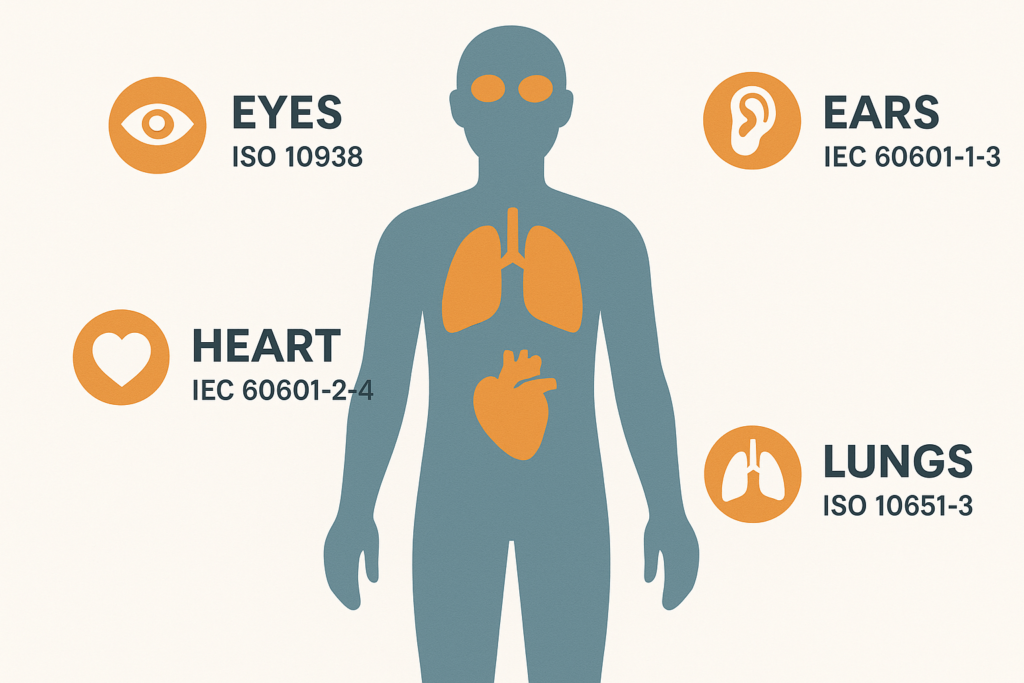
The FMCSA has established specific medical standards that every commercial driver must meet. These aren’t arbitrary numbers – they’re based on decades of safety research and accident analysis.
Your eyesight standards are non-negotiable:
Hearing requirements ensure you can detect warning signals and communicate effectively:
After driving for 8 cumulative hours, you must take a break of at least 30 minutes before continuing to drive. If you’re using a sleeper berth, you can split your required 10-hour break into two periods: one of at least 7 consecutive hours in the sleeper berth and another of at least 2 consecutive hours either off duty or in the sleeper berth.
This is where many drivers face challenges. The standards are:
You must demonstrate the physical ability to:
Internal Link Opportunity: “DOT Physical Preparation Checklist”
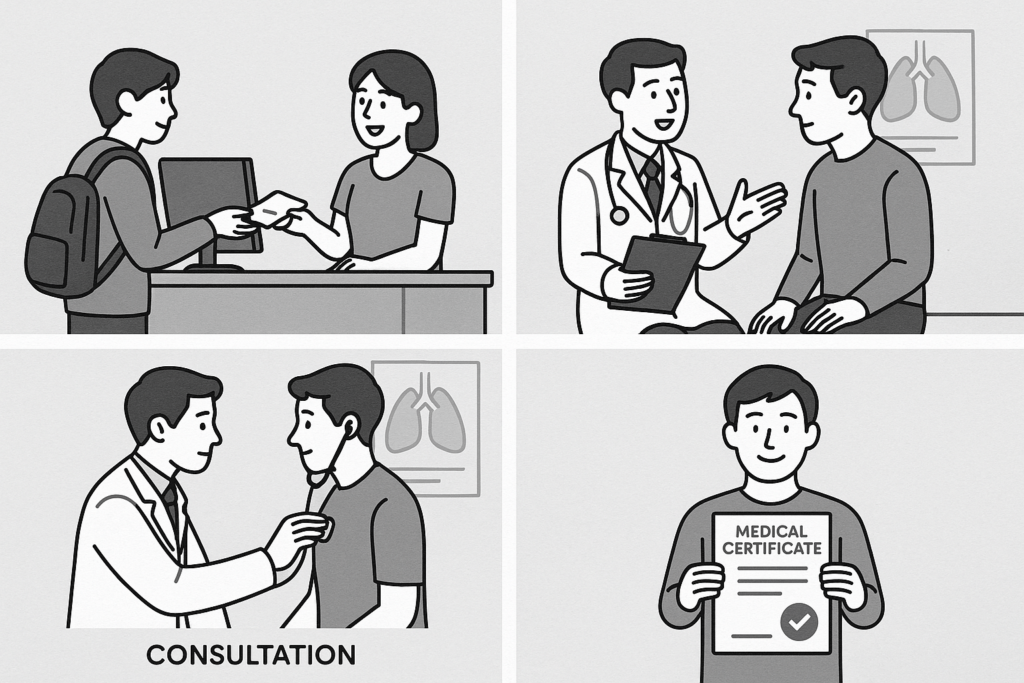
Understanding the actual examination process can significantly reduce anxiety and improve your chances of passing. Here’s exactly what happens during a typical DOT physical:
Your medical examiner will review:
The physical exam is comprehensive but straightforward:
If you pass, you’ll receive your Medical Examiner’s Certificate immediately. If issues are identified, you may receive a temporary certificate while addressing specific concerns.
The entire process typically takes 30-45 minutes and costs between $75-150, depending on your location and the examining facility.

While the list of automatically disqualifying conditions might seem daunting, it’s important to understand that many conditions are manageable with proper treatment and documentation.
These conditions typically result in permanent disqualification:
These conditions can be addressed with treatment:
Contrary to popular belief, insulin-dependent diabetes isn’t an automatic permanent disqualification. The Diabetes Exemption Program allows qualified drivers to continue commercial driving with proper medical management and monitoring
Sleep apnea has become increasingly scrutinized due to its impact on driver alertness. If diagnosed, you’ll need:
Internal Link Opportunity: “Managing Sleep Apnea as a Commercial Driver”
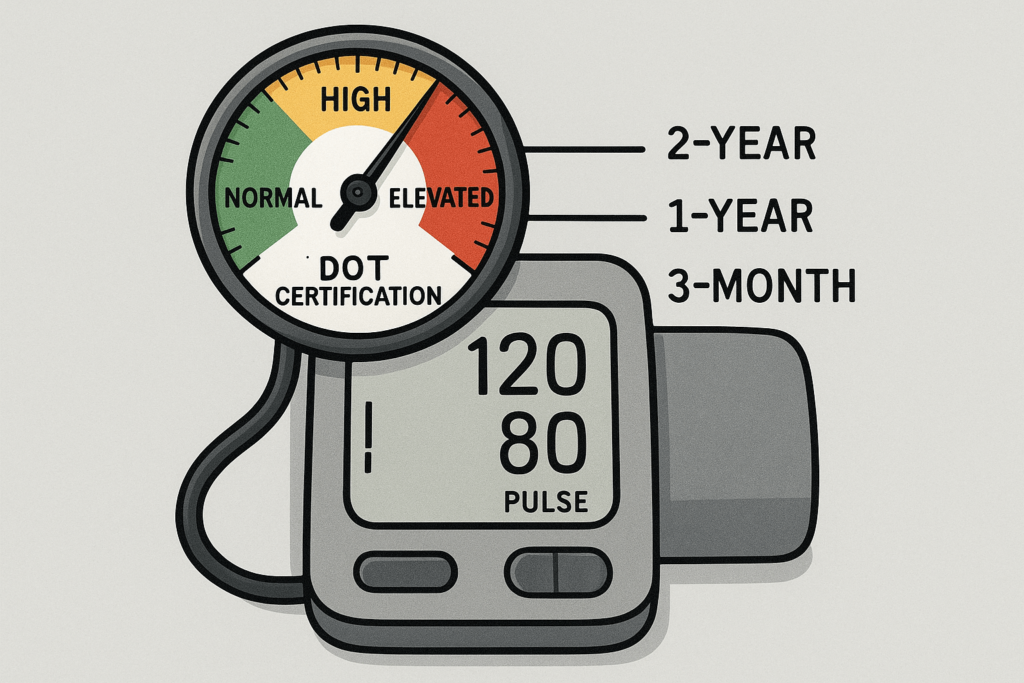
Cardiovascular health is arguably the most critical aspect of your DOT physical, and it’s where proper preparation can make the biggest difference.
The FMCSA uses specific blood pressure ranges that determine your certification period:
If you have a history of heart disease, you’ll need current documentation including:
Preparation strategies that actually work:

Your ability to see and hear effectively isn’t just about passing a test – it’s about making split-second decisions that can save lives.
The vision test goes beyond basic acuity:
Hearing tests can be performed using two methods:
Both glasses and hearing aids are not just acceptable – they’re encouraged when needed. Your medical certificate will note any corrective device requirements, and you must wear them while driving.
Internal Link Opportunity: “Choosing the Right Glasses for Commercial Driving”
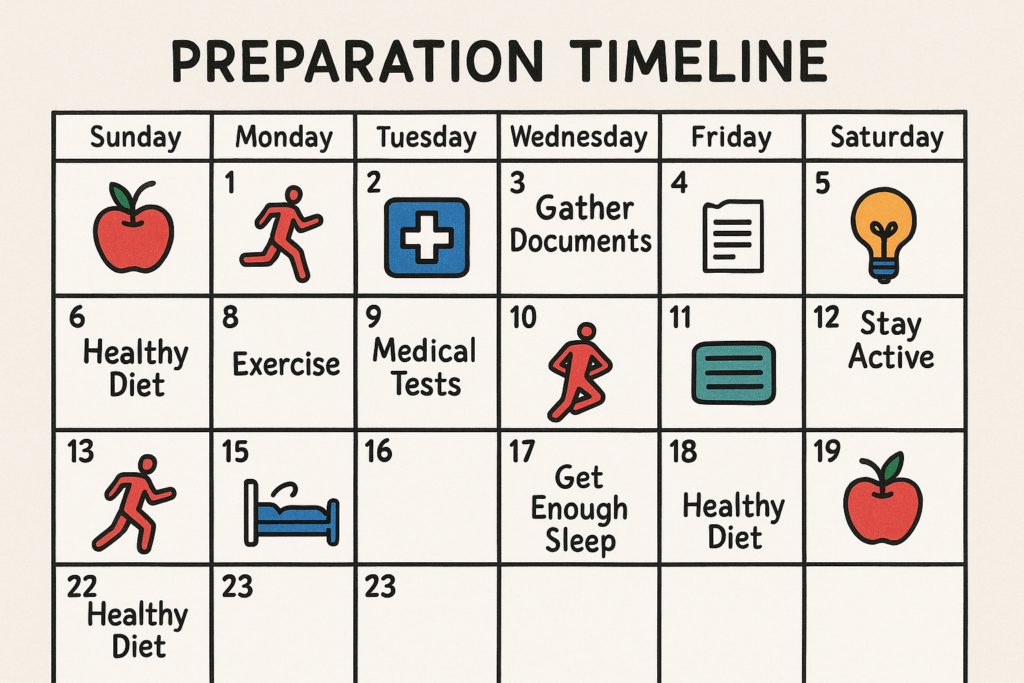
Success in your DOT physical starts weeks before you walk into the examination room. Here’s your strategic preparation plan:
Always bring:
Internal Link Opportunity: “DOT Physical Documentation Checklist Template”
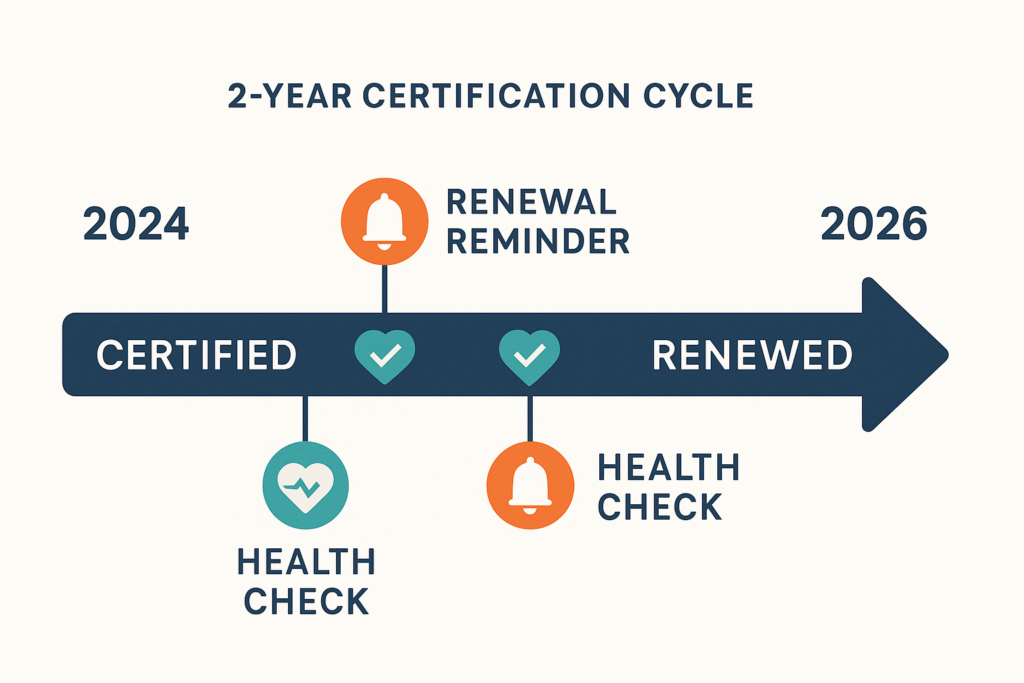
Maintaining your DOT medical certification is an ongoing responsibility that extends far beyond passing your initial exam.
Most drivers receive a two-year medical certificate, but certain conditions require shorter intervals:
You must notify your state licensing agency of your medical certification status and any changes. The four self-certification categories are:
Your responsibilities don’t end when you receive your certificate:
The FMCSA recognizes that some qualified drivers may not meet standard requirements but can still drive safely with proper accommodations.
Drivers with monocular vision (vision in only one eye) can apply for federal exemption if they:
Drivers with monocular vision (vision in only one eye) can apply for federal exemption if they:
Insulin-treated diabetes mellitus doesn’t automatically end your driving career. The exemption program requires:
While rare, hearing exemptions may be granted for drivers who:
Federal exemption applications require:
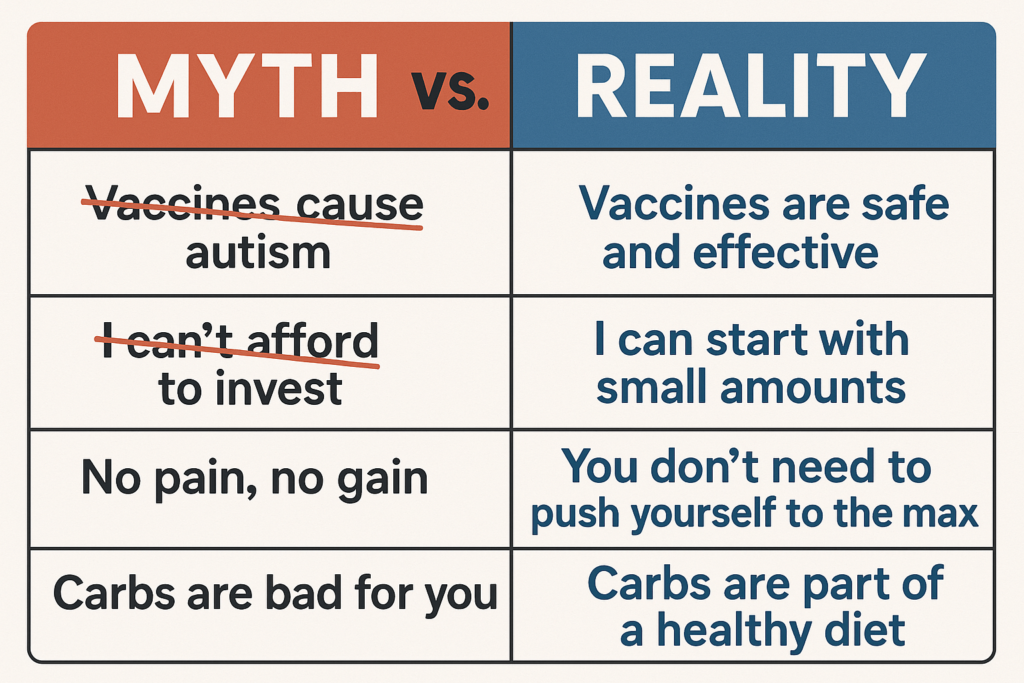
Misinformation about DOT physicals can cause unnecessary anxiety and poor preparation decisions. Let’s set the record straight on the most persistent myths:Misinformation about DOT physicals can cause unnecessary anxiety and poor preparation decisions. Let’s set the record straight on the most persistent myths:
“I’m too old to pass a DOT physical” Reality: There’s no age limit for commercial driving. Many drivers continue successful careers well into their 70s and beyond with proper health management.
“Diabetes means automatic disqualification” Reality: Both Type 1 and Type 2 diabetes can be compatible with commercial driving when properly managed. Even insulin-dependent drivers can qualify through exemption programs.
“One bad reading means automatic failure” Reality: Medical examiners understand that anxiety and other factors can affect readings. Multiple measurements and clinical judgment are standard practice.

Taking your DOT physical preparation to the next level involves understanding the nuances that can make the difference between a smooth certification and potential complications.
Choose your medical examiner wisely:
Physical anxiety can directly impact your exam results, particularly blood pressure readings:
Present your medical information professionally:

The financial implications of DOT physical requirements extend far beyond the examination fee itself.
Investing in your health pays dividends:
Many employers and insurance companies offer incentives for healthy drivers:
Internal Link Opportunity: “Budgeting for DOT Physical Compliance Costs”

The DOT physical process is evolving with technology, making examinations more efficient and accurate.
Modern medical practices are implementing:
Modern medical practices are implementing:
While the physical examination must be conducted in person, supporting services are going digital:
Several apps can help you prepare and maintain compliance:
Emerging technologies that may impact DOT physicals:
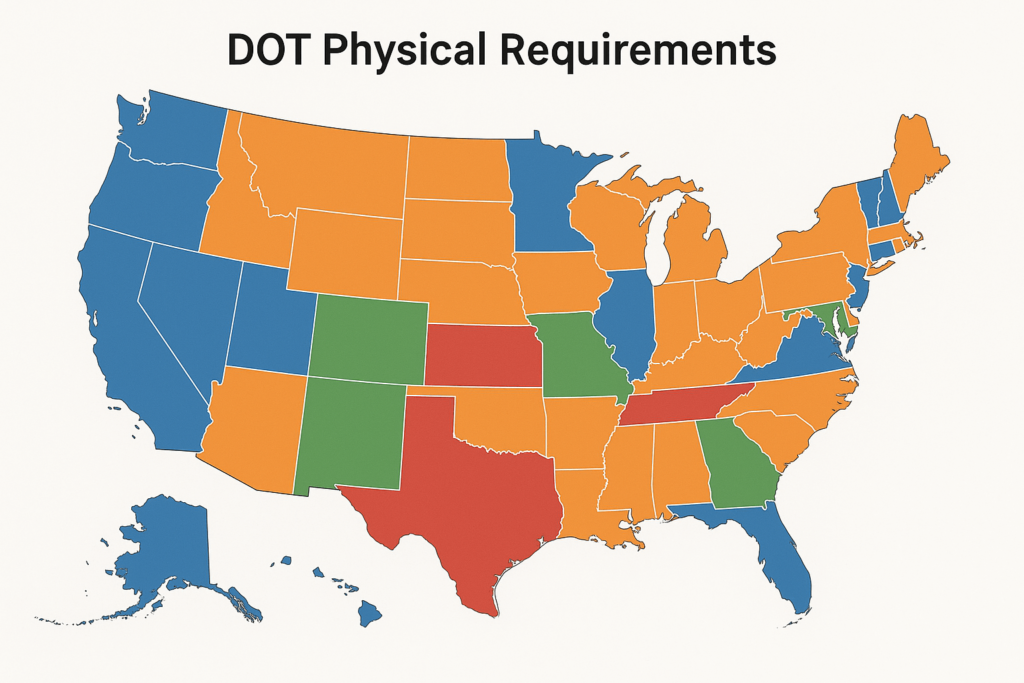
While federal standards provide the baseline, state-specific variations can impact your DOT physical requirements.
Understanding this distinction is crucial:
Certain states have additional requirements:
If you drive in multiple states:
Understanding DOT physical requirements doesn’t have to be overwhelming! These medical standards exist for one crucial reason: keeping you and everyone else on the road safe. From vision and hearing tests to cardiovascular assessments, each requirement serves a specific safety purpose that protects both drivers and the traveling public.
The key to success lies in preparation and proactive health management. Most commercial drivers pass their DOT physical on the first try when they understand the requirements and take care of their health year-round, not just before exam time. Remember, this isn’t just about meeting minimum standards – it’s about maintaining the physical and mental fitness needed for a long, successful driving career.
Your DOT physical is more than a regulatory requirement – it’s an opportunity to take control of your health and ensure your career longevity. The drivers who thrive in this industry are those who view their medical certification as an investment in their future, not just another hurdle to overcome.
Ready to tackle your DOT physical with confidence? Start preparing today by scheduling that overdue doctor’s visit, organizing your medical records, and taking control of any chronic conditions. Your driving career – and your safety – depends on it!
We’re here to keep your trucking business moving forward. Reach out to us with any inquiries, service requests, or partnership opportunities. Let’s grow together!

Let Clear Path Trucking LLC. be your trusted partner in navigating the road to success. Whether you’re an owner-operator or managing a fleet, we’re here to help you take your trucking business to the next level.
Subscribe to receive industry updates and tips directly in your inbox
© Copyright 2024 Clear Path Trucking LLC. - All Rights Reserved.